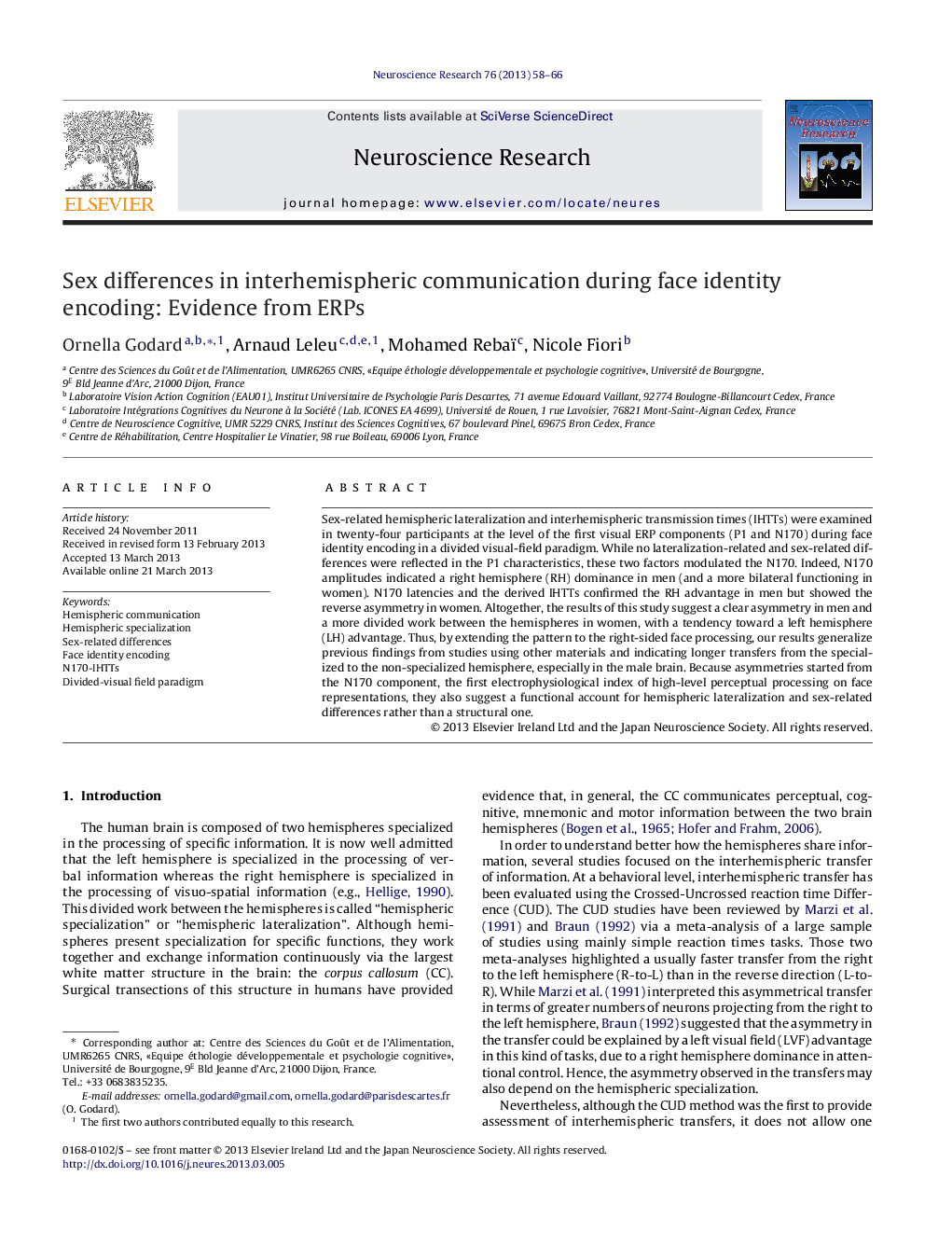| Article ID | Journal | Published Year | Pages | File Type |
|---|---|---|---|---|
| 4351428 | Neuroscience Research | 2013 | 9 Pages |
•We investigate sex differences in interhemispheric communication during face identity encoding.•N170-IHTTs asymmetry depended on the sex of the participants with an opposite pattern.•The study suggests a functional account of asymmetries in IHTTs.
Sex-related hemispheric lateralization and interhemispheric transmission times (IHTTs) were examined in twenty-four participants at the level of the first visual ERP components (P1 and N170) during face identity encoding in a divided visual-field paradigm. While no lateralization-related and sex-related differences were reflected in the P1 characteristics, these two factors modulated the N170. Indeed, N170 amplitudes indicated a right hemisphere (RH) dominance in men (and a more bilateral functioning in women). N170 latencies and the derived IHTTs confirmed the RH advantage in men but showed the reverse asymmetry in women. Altogether, the results of this study suggest a clear asymmetry in men and a more divided work between the hemispheres in women, with a tendency toward a left hemisphere (LH) advantage. Thus, by extending the pattern to the right-sided face processing, our results generalize previous findings from studies using other materials and indicating longer transfers from the specialized to the non-specialized hemisphere, especially in the male brain. Because asymmetries started from the N170 component, the first electrophysiological index of high-level perceptual processing on face representations, they also suggest a functional account for hemispheric lateralization and sex-related differences rather than a structural one.
